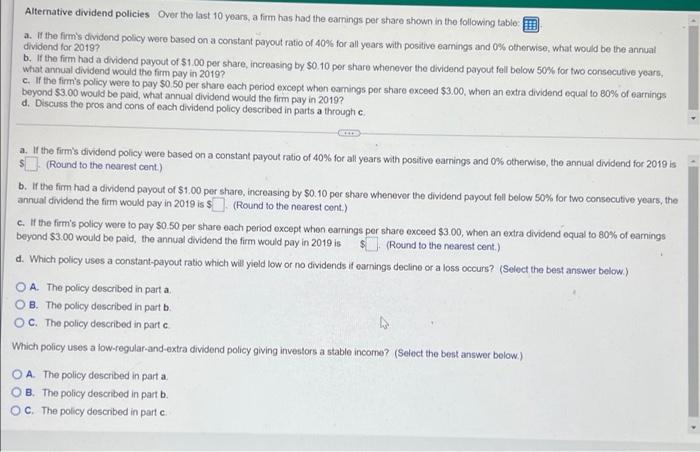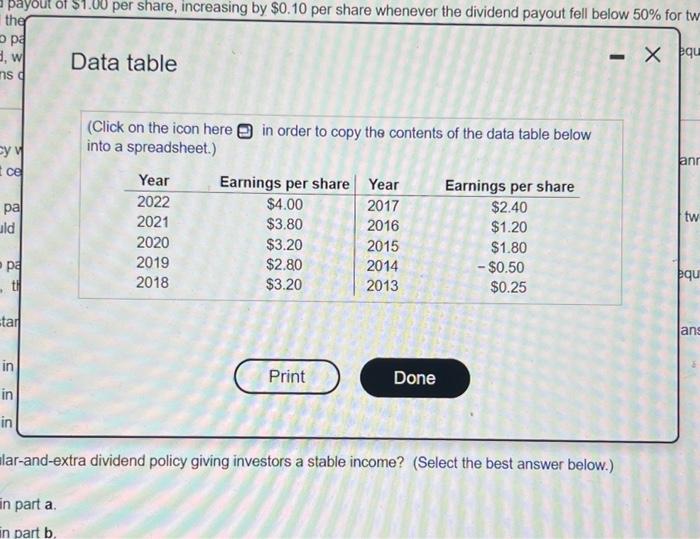help would be much appreciated thank you :)

Alternative dividend policies Over the last 10 years, a firm has had the earnings per share shown in the following table a. If the firm's dividend policy were based on a constant payout ratio of 40% for all years with positive earnings and 0% otherwise, what would be the annual dividend for 2019? b. If the firm had a dividend payout of $1.00 per share, increasing by $0.10 per share whenever the dividend payout fell below 50% for two consecutive years, what annual dividend would the firm pay in 2019? c. If the firm's policy were to pay $0.50 per share each period except when camnings por share exceed $3.00, when an extra dividend equal to 80% of earnings beyond $3.00 would be paid, what annual dividend would the firm pay in 2019? d. Discuss the pros and cons of each dividend policy described in parts a through a. If the firm's dividend policy were based on a constant payout ratio of 40% for all years with positive earnings and 0% otherwise, the annual dividend for 2019 is (Round to the nearest cont.) b. If the firm had a dividend payout of $1.00 per share, increasing by S0. 10 per share whenever the dividend payout fell below 50% for two consecutive years, the annual dividend the firm would pay in 2019 is $(Round to the nearest cont.) c. If the firm's policy were to pay $0.50 per share each period except when earnings per share exceed $3.00, when an extra dividend equal to 80% of earnings beyond $3.00 would be paid, the annual dividend the firm would pay in 2019 is SU (Round to the nearest cent.) d. Which policy uses a constant-payout ratio which will yield low or no dividends it earnings decline or a loss occurs? (Select the best answer below.) A. The policy described in part a B. The policy described in part b. OC. The policy described in parte Which policy uses a low-regular-and-extra dividend policy giving investors a stable income? (Select the best answer below.) O A. The policy described in part a. OB. The policy described in part b. OC. The policy described in parte - payout of $1 ther per share, increasing by $0.10 per share whenever the dividend payout fell below 50% for tw 9, w Data table x qu ns a Ice anr pal (Click on the icon here in order to copy the contents of the data table below into a spreadsheet.) Year Earnings per share Year Earnings per share 2022 $4.00 2017 $2.40 2021 $3.80 2016 $1.20 2020 $3.20 2015 $1.80 2019 $2.80 2014 - $0.50 2018 $3.20 2013 $0.25 tw uld pa pou . ar ang Print Done in in in lar-and-extra dividend policy giving investors a stable income? (Select the best answer below.) In part a in part b









